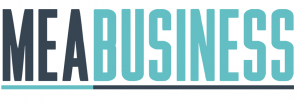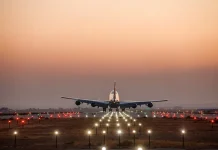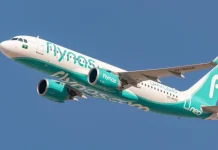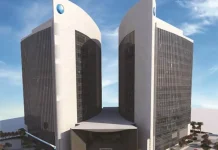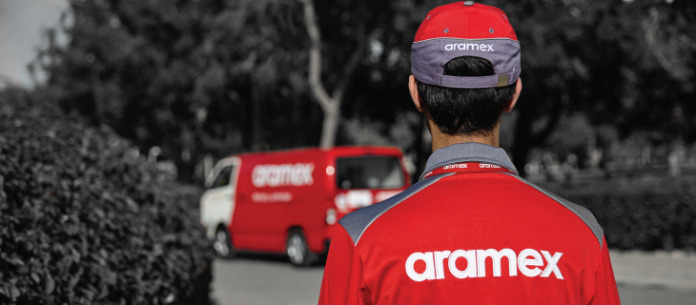Aramex announced its financial results for second quarter (Q2) and first half (H1) ended 30 June 2020.
Aramex’s Q2 2020 Revenues grew by 4% to AED 1,332 million, compared to AED 1,279 million in Q2 2019 driven mainly by a surge in e-commerce activities resulting from increased online shopping during COVID-19 related lockdowns. Aramex’s Revenues in the H1 2020 increased by 1% to AED 2,528 million, compared to AED 2,512 million in the corresponding period of 2019.
Net Profit in Q2 declined 23% to AED 94.4 million, compared to AED 123 million in Q2 2019. Net profit was negatively impacted by the rise in unforeseen costs prompted by the global onslaught of COVID-19 such as the exceptional challenges in cross-border operations due to border closures, the increase in line haul costs which in turn impacted profit margins in both International Express and Freight. For Domestic Express, higher costs were incurred related to scaling operations in core markets in response to the surge in shipment volumes. Additionally, in line with Aramex’s commitment to providing safe and essential services to its customers, there were increased costs related to personal protective equipment for Company employees and other health and safety measures such as sanitization of warehouses, sorting facilities and fleets. Over the period, the Company introduced cost containment measures and expects most measures to remain in place for the second half of the year in light of the uncertain market outlook and lack of visibility of second and consequent COVID-19 waves. Aramex’s Net Profit in the First Half of 2020 fell by 30% to AED 162 million, compared to AED 231 million in H1 2019.
Bashar Obeid, Chief Executive Officer of Aramex, said: “Given a very challenging period, I am pleased with Q2 results, the heroic performance of our employees and the strong growth in overall express shipment volumes.
“Within our business lines, Domestic Express was the standout performer driven by exceptional growth from e-commerce related deliveries as government mandated stay at home measures and lockdowns forced people to turn to online channels to shop for necessities and other goods. We also benefitted from a surge in demand for healthcare related shipments which is positively reflected in our Freight and Domestic Express service lines. However, some industries which we service are still witnessing a slow recovery; the oil and gas sector which has been impacted by low oil prices and the economic slowdown has negatively impacted the performance of Freight, as has the sluggish demand for traditional retail. While we are starting to see a modest recovery in some of our verticals, it is too soon to say with certainty that we have returned to pre-COVID-19 levels.
“As a business, we are now operating in a higher cost environment which is adding pressure to our profitability margins. While some factors pushing costs higher may dissipate or normalize over time, such as sanitization costs, others may adjust higher for an extended period, such as line haul costs. Having said that, we have a robust balance sheet and comfortable free cash flow position, enabling us to manage higher costs while continuing to protect shareholder value. Also, we expect that as we continue to execute on our business and digital transformation strategy, we will carry on improving operational efficiency and quality of customer service which, over the long term, will continue to drive down overall costs and relieve some of the pressure on margins.”
Othman Aljeda, acting Chief Operating Officer and Regional CEO for Aramex in Europe, North America and Asia, added: “Over the period, we remained focused on efficient and innovative problem solving to resolve several operational challenges while managing a 26% growth in overall Express (International and Domestic) shipment volumes.
“We have started ramping up on the ground operations and investing in expanding last mile capacity in our core markets to meet the surge in volumes led by robust demand from the e-commerce segment. We are hiring more couriers, increasing our fleet, and investing in expanding our warehousing facilities and related infrastructure. We are also capitalizing on our crowd sourcing solution, Aramex Fleet, and our other digital-enabled cost-efficient solutions to help handle the spike in volumes. During the quarter we introduced Aramex SMART, a full stack payment option which fits perfectly in the contactless environment and expect it to be a powerful payment and delivery solution for e-tailers.
“For our International Express and Freight business, we are leveraging on our longstanding relationships with our airline partners to ensure we deliver shipments with minimum delays. We have been experiencing a particularly difficult operating environment in the US, due to social unrest and a resurgence in COVID-19 cases. However, we continue to manage our operations with heightened levels of health and safety measures.
“While we are starting to see a return to pre-COVID operating environment in some markets, we remain vigilant in our approach and will remain focused on efficiently overcoming those operational challenges to ensure we maintain the level of service our customers are used to seeing from us.”
Q2 2020 Business Performance Highlights:
Aramex’s cross-border International Express decreased by 1% to AED 582 million and shipment volumes fell by 4%. However, Shop & Ship, a component of this business line, enjoyed a good quarter, especially from US origins. It is worth noting that International Express continues to witness margin pressures not only because of COVID-19 related costs, but because of overall pricing pressure, a facet which has been weighing on this business line for several quarters.
The Domestic Express business grew by 31% to AED 336 million and e-commerce volumes in core markets surged 133% over the period with particularly strong contribution from Saudi Arabia, UAE and Kuwait. This was driven by a very strong demand from e-commerce activities and particularly from increased online shopping pre-rise in VAT and custom duties in Saudi Arabia.
Freight-Forwarding decreased by 3% to AED 268 million, mainly because of the decline in demand from the oil and gas and the traditional retail segments. However, the healthcare segment continued to perform exceptionally, alleviating some of the pressure from other segments.
The Logistics & Supply Chain Solutions business was unchanged year-on-year at AED 85 million. However, over the H1 period, it was up 6%, mainly owed to the increase in demand for those services from traditional retailers expanding into online sales to service changing customer behavior.
Commenting on Aramex’s outlook for the remainder of 2020, Bashar Obeid said: “We are not out of the woods yet; the shape of the global economic recovery is still uncertain, and it is too early to determine a clear trend or change in consumer behavior. However, we are optimistic that growth in e-commerce will continue to drive healthy shipment volumes and expect to continue to see solid growth in the healthcare vertical, albeit at a likely slower pace of growth. As such we will continue to allocate resources to expand last mile operations and upgrade our infrastructure, including warehouses and fleets.
“For some of our other business lines, namely Freight and International Express, we are currently undergoing a review of those business models to ensure our operations remain working at optimal and cost-efficient levels through varying market cycles and sustainable in the event of unpredictable events – such as this pandemic – while remaining operationally and financially agile.”
